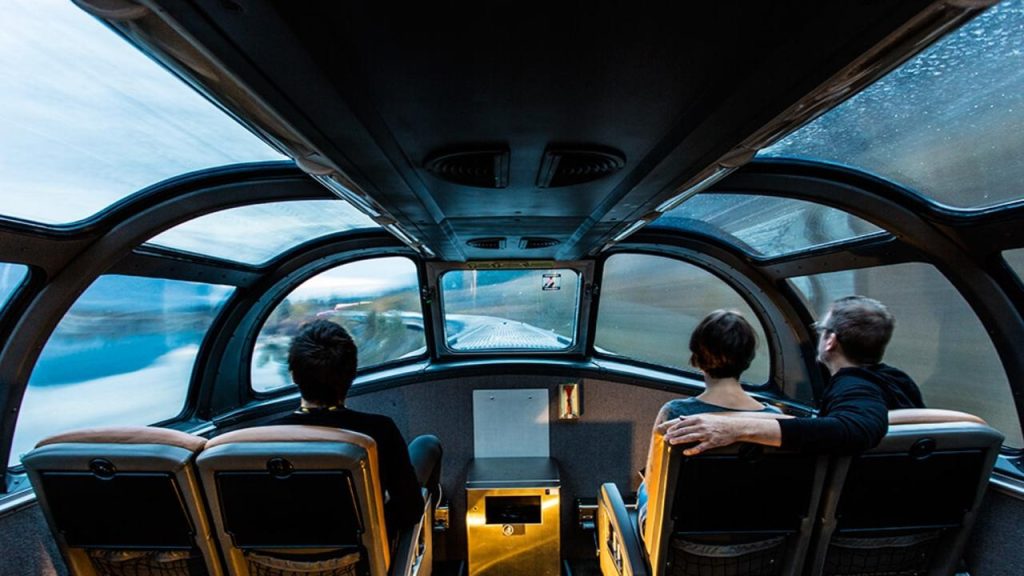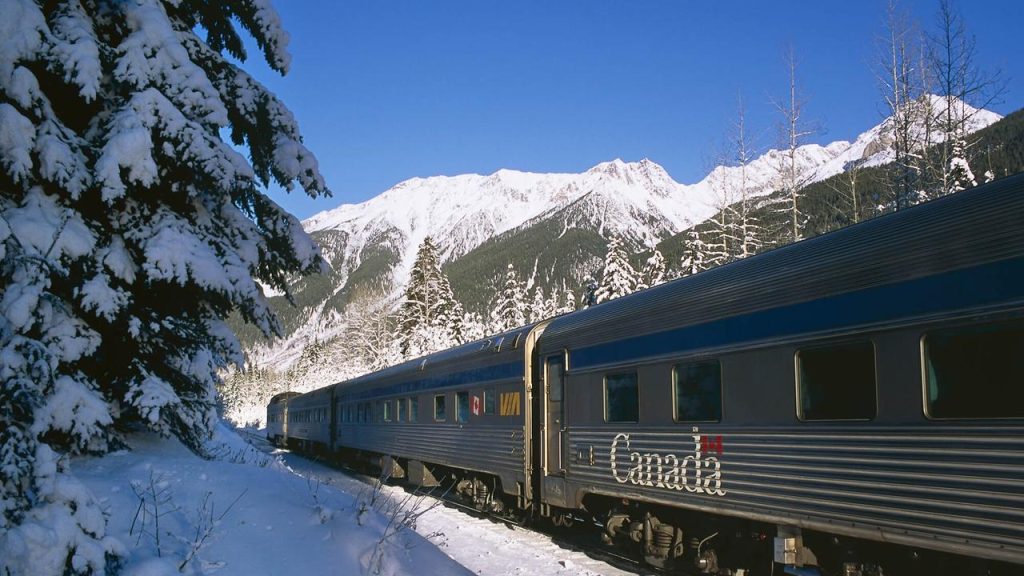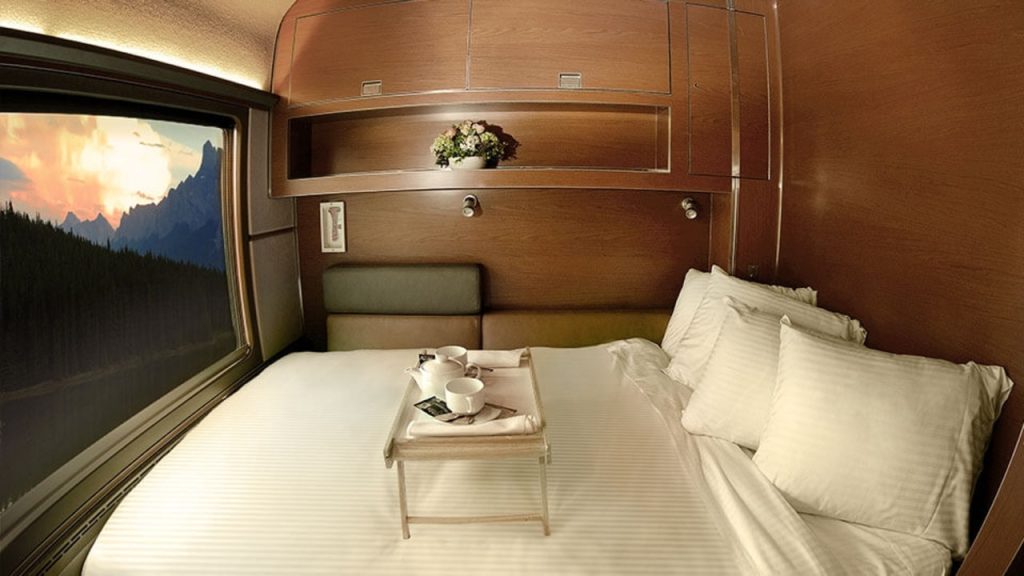It’s early morning in the Canadian Rocky Mountains, and a gang of elk is mooching around in the snow outside Jasper train station like loitering teenagers.
The station is a historic oddity. Inspired by Britain’s Arts and Crafts movement, and looking uncannily like an English country cottage, it was built in 1925, seemingly assembled from whatever natural material was lying around – an asymmetric masterpiece of stones and stucco, cedar shingle roofing, cobblestone chimneys, gleaming timber and arrow-sharp gables.
And while it could be lifted from a dreamy model railway set, it satisfies boffins as well as romantics, being the living legacy of a railroad rivalry that forged the settling of Canada’s west.

In the early 1900s, two railway companies were competing to lay tracks to the Pacific. World War I sent them both broke, and in 1923 they merged to form the federally operated Canadian National Railway.
As the gateway to the newly accessible mountains, Jasper’s storybook station became the focal point for adventure-seeking tourists, and the heart of the community.
I’ve ducked past the elks and arrived in time to board The Canadian, a train every bit as whimsical as the station it has just pulled into. Running between Vancouver and Toronto, the four-night, 4466km transcontinental journey traverses the full palette of Canada’s diverse landscapes, from the lakes and forests of the Canadian Shield and the rolling prairies to the Rocky Mountains.
But it’s also a time machine to a romantic age of vintage train travel, aboard – listen to how nice this sounds – the last of the streamliners.

The name refers to the sleek, silver, stainless-steel railcars, in use since the line was launched in 1955, and somehow still rolling.
Positively futuristic at the time, they still feel cartoonishly space-aged, especially the skyline cars with their fluted-glass observation domes protruding from the roof, giving passengers a 360-degree view of the scenery.
The whole experience feels like stepping into the first-class cabin of an early Jumbo Jet. But it’s almost end of the line for the venerable streamliners, with operator VIA Rail signalling the time for “fleet modernisation” is nigh. If you want to ride this route in retro style, you had better be quick.

I nab a seat in the dome as we pull out of Jasper. Although I’m only doing the last quarter of the westward journey, it’s the most spectacular section, an endless parade of frozen waterfalls and forests, ice-encrusted rivers, snowy peaks and pendant-like lakes.
My sleeper cabin has two armchairs that convert to a single bed, a toilet and a basin. Prestige-class passengers enjoy a double bed, a corner lounge, private washroom including shower, a flat-screen TV and a dedicated concierge service.

Meals (inclusive in the ticket price for sleeper and prestige class passengers) are served in the restaurant car, tables fastidiously preened with white tablecloths and lace doilies.
In another charming throwback to train travel of yesteryear, I’m seated with strangers – a family from Toronto – and am recruited by the parents into helping cajole their eight-year-old son into eating his greens (in hindsight threatening to leave him on the platform in Kamloops may have been going too far).

I’m gently rocked to the best sleep of my life, waking to the first shards of sunlight glinting off steel as we slip in through the gritty outskirts of Vancouver. I was warned to expect delays on The Canadian (you’re advised not to book onwards travel within 24 hours of the scheduled arrival time), but we arrive in the future, half an hour early.
I step off onto the platform and allow the cabin attendant to reset my cabin, ready for the next lot of time travellers to board the last of the streamliners.
In the know
The Canadian is a four-night train trip that runs between Toronto and Vancouver
year-round two to three times a week. Economy-class seats from $560, sleeper cabins from $1600, prestige -class cabins
for two from $11800.
Ricky French was a guest of Destination Canada, Tourism Jasper and Via Rail.
The Australian

